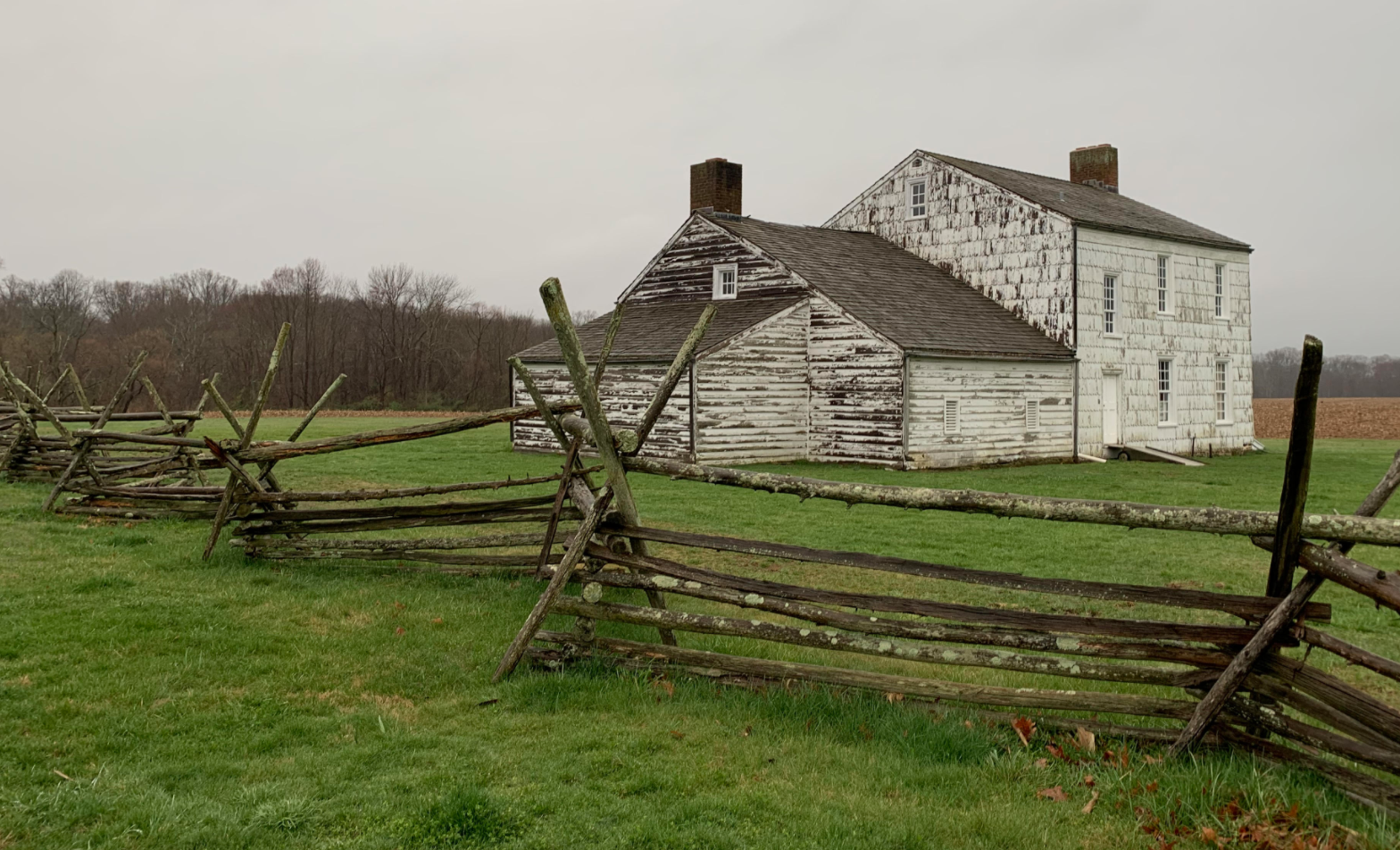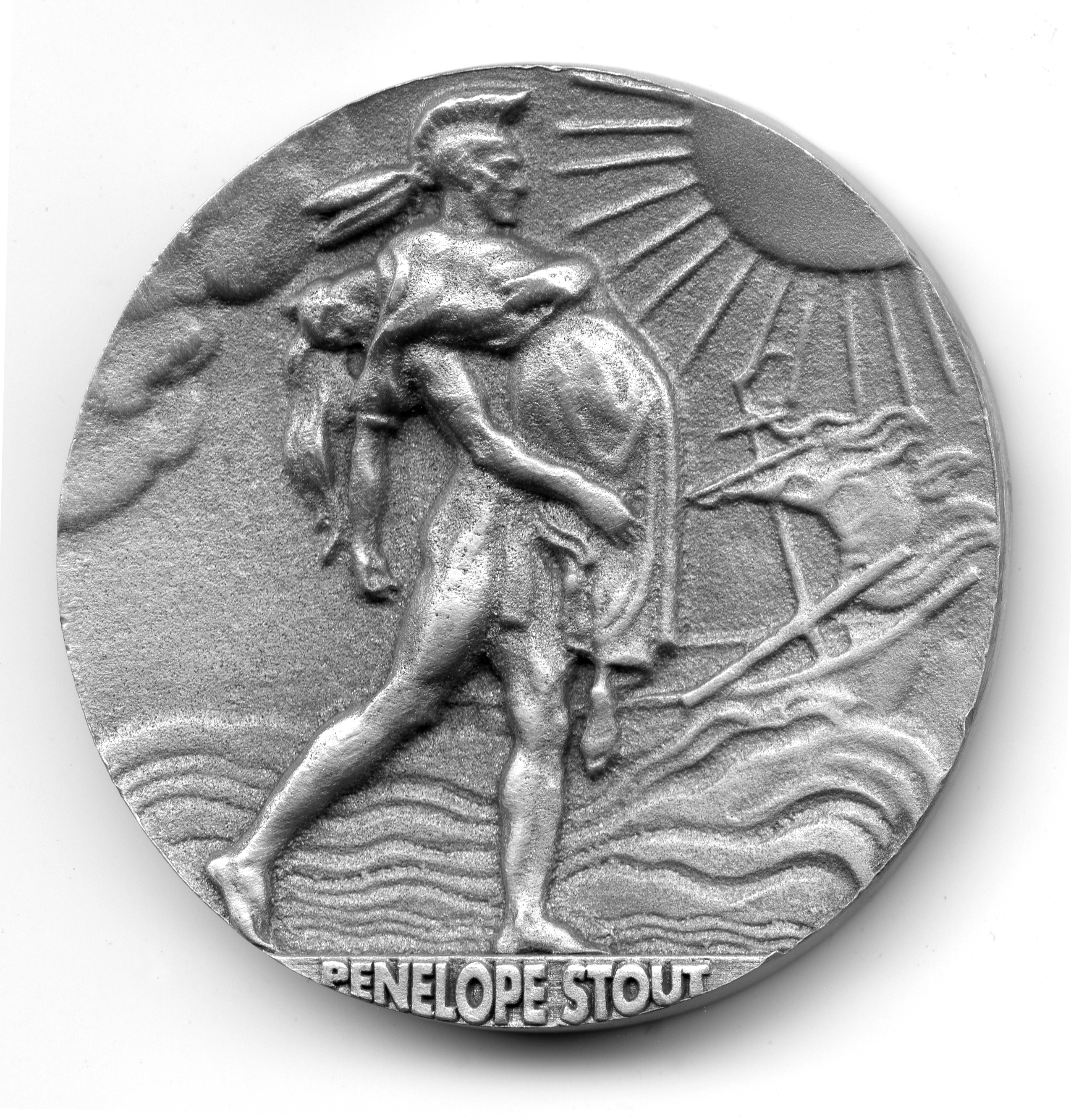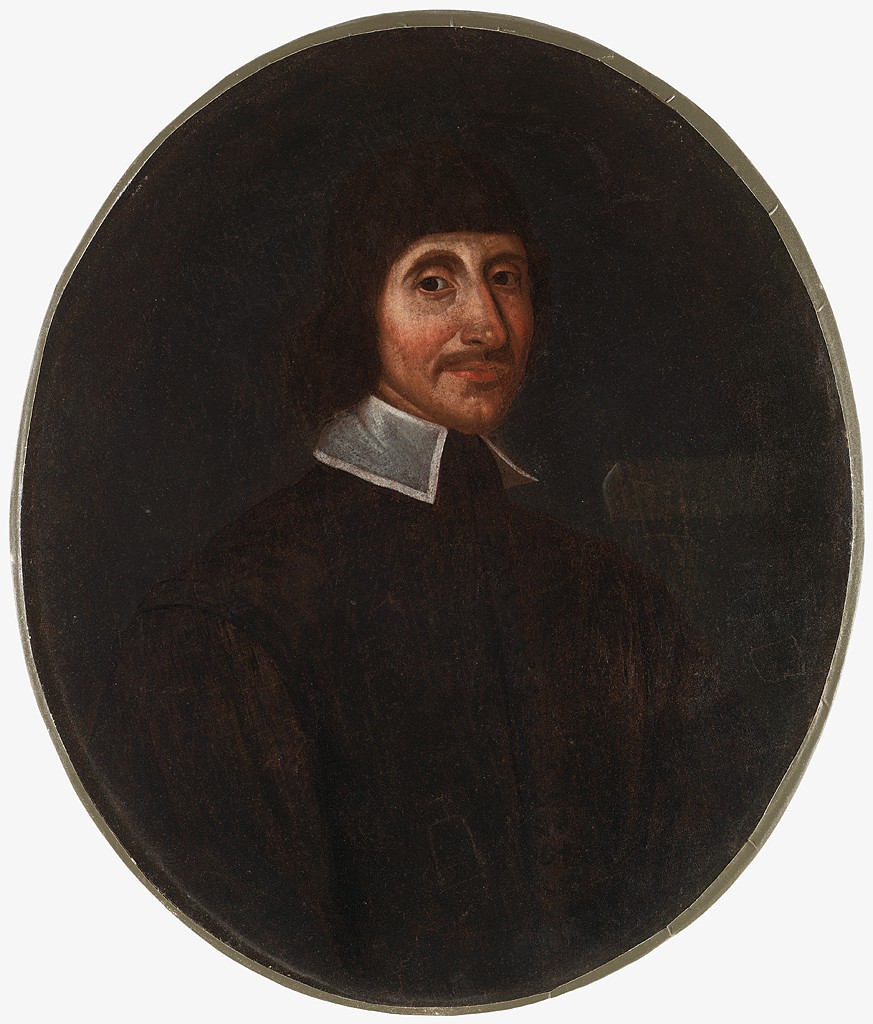|
John Throckmorton (settler)
John Throckmorton, Gent. (1601–1684) was an early settler of Providence Plantation in what became the Colony of Rhode Island and Providence Plantations, and he was one of the 12 original proprietors of that settlement. He emigrated from Norfolk, England to settle in Salem in the Massachusetts Bay Colony, but religious tensions brought about his removal to Providence. In 1643, Throckmorton made a land purchase in New Netherland and settled there with several dozen others. However, an Indian attack during Kieft's War caused him and others to return to Providence. He became active in civil affairs, serving as moderator, deputy, and treasurer. He died in 1684 in Middletown, New Jersey, where he went to visit his children, and was buried there. Throggs Neck in The Bronx, New York City is named for him. Life John Throckmorton was almost certainly baptised in Norwich, county Norfolk, England on 9 May 1601, the son of grocer and Alderman Bassingburn Throckmorton. On 20 Marc ... [...More Info...] [...Related Items...] OR: [Wikipedia] [Google] [Baidu] |
Norwich
Norwich () is a cathedral city and district of Norfolk, England, of which it is the county town. Norwich is by the River Wensum, about north-east of London, north of Ipswich and east of Peterborough. As the seat of the Episcopal see, See of Norwich, with one of the country's largest medieval cathedrals, it is the largest settlement and has the largest Norwich built-up area, urban area in East Anglia. The population of the Norwich City Council local authority area was estimated to be 144,000 in 2021, which was an increase from 143,135 in 2019. The wider Norwich Built-up area, built-up area had a population of 213,166 in 2019. Heritage and status Norwich claims to be the most complete medieval city in the United Kingdom. It includes cobbled streets such as Elm Hill, Norwich, Elm Hill, Timber Hill and Tombland; ancient buildings such as St Andrew's and Blackfriars' Hall, Norwich, St Andrew's Hall; half-timbered houses such as Dragon Hall, Norwich, Dragon Hall, Norwich Guildhal ... [...More Info...] [...Related Items...] OR: [Wikipedia] [Google] [Baidu] |
Hugh Peters
Hugh Peter (or Peters) (baptized 29 June 1598 – 16 October 1660) was an English preacher, political advisor and soldier who supported the Parliamentary cause during the English Civil War, and became highly influential. He employed a flamboyant preaching style that was considered highly effective in furthering the interests of the Puritan cause. From a radically Protestant family of Cornwall, England, though of part Dutch origin, Peter emigrated to a Puritan colony in America, where he first rose to prominence. After spending time in Holland, he returned to England and became a close associate and propagandist for Oliver Cromwell. Peter may have been the first to propose the trial and execution of Charles I and was believed to have assisted at the beheading. Peter unsuccessfully proposed revolutionary changes that would have disestablished the Church of England's role in landholding and strike at the heart of the legal title to property. Disagreeing with the war against Prote ... [...More Info...] [...Related Items...] OR: [Wikipedia] [Google] [Baidu] |
William D'Aubigny (rebel)
William d'Aubigny or D'Aubeney or d'Albini, Lord of Belvoir (died 1 May 1236) was a prominent member of the baronial rebellions against King John of England. He was one of the signatories of the Magna Carta. Family background D'Aubigny was the son of William d'Aubigny of Belvoir and Maud FitzRobert and the grandson of William d'Aubigny and Cecily le Bigod, and was heir to Domesday Book landholder Robert de Toeni, who held many properties, possibly as many as eighty. Amongst them was one in Leicestershire, where he built Belvoir Castle, which was the family's home for many generations. He was High Sheriff of Warwickshire and Leicester and High Sheriff of Bedfordshire and Buckinghamshire in 1199. Involvement in military actions D'Aubigny stayed neutral at the beginning of the troubles of King John's reign, only joining the rebels after the early success in taking London in 1215. He was one of the twenty-five sureties or guarantors of Magna Carta. In the war that followed the ... [...More Info...] [...Related Items...] OR: [Wikipedia] [Google] [Baidu] |
Magna Carta
(Medieval Latin for "Great Charter of Freedoms"), commonly called (also ''Magna Charta''; "Great Charter"), is a royal charter of rights agreed to by King John of England at Runnymede, near Windsor, Berkshire, Windsor, on 15 June 1215. First drafted by the Archbishop of Canterbury, Cardinal Stephen Langton, to make peace between the unpopular king and a group of rebel barons, it promised the protection of church rights, protection for the barons from illegal imprisonment, access to swift justice, and limitations on feudal payments to the Crown, to be implemented through a council of 25 barons. Neither side stood behind their commitments, and the charter was annulled by Pope Innocent III, leading to the First Barons' War. After John's death, the regency government of his young son, Henry III of England, Henry III, reissued the document in 1216, stripped of some of its more radical content, in an unsuccessful bid to build political support for their cause. At the end of th ... [...More Info...] [...Related Items...] OR: [Wikipedia] [Google] [Baidu] |
Monmouth County, New Jersey
Monmouth County () is a county located on the coast of central New Jersey. The county is part of the New York metropolitan area and is situated along the northern half of the Jersey Shore. As of the 2020 U.S. census, the county's population was 643,615, making it the state's fifth most populous county,QuickFacts - Monmouth County, New Jersey; New Jersey; United States , . Accessed March 24, 2018. representing an increase of 13,245 (2.1%) from the 2010 census< ... [...More Info...] [...Related Items...] OR: [Wikipedia] [Google] [Baidu] |
Gravesend, New York
Gravesend is a neighborhood in the south-central section of the New York City borough of Brooklyn, on the southwestern edge of Long Island in the U.S. state of New York. It is bounded by the Belt Parkway to the south, Bay Parkway to the west, Avenue P to the north, and Ocean Parkway to the east. Gravesend was one of the original towns in the Dutch colony of New Netherland. After the English took over, it was one of the six original towns of Kings County in colonial New York. Gravesend was the only English chartered town in what became Kings County, and is notable as being one of the first towns founded by a woman, Lady Deborah Moody. The Town of Gravesend encompassed in southern Kings County, including the entire island of Coney Island, and was annexed by the City of Brooklyn in 1894. The modern-day neighborhood is part of Brooklyn Community Board 11. As of 2010, Gravesend had a population of 29,436. __TOC__ Name The name "Gravesend" was given to the area by New Amst ... [...More Info...] [...Related Items...] OR: [Wikipedia] [Google] [Baidu] |
Penelope Stout
Penelope Prince and her husband Richard Stout were among the original settlers of Middletown, colonial New Jersey's second English settlement, in 1664. As “Penelope Van Prince” (Van Princes, Van Princis), she is the central figure in a popular legend that claims she survived a ship stranding and deadly Lenape attack. Penelope Prince: Legend and History There are two known historical records for Penelope Prince Stout. The first is from Gravesend on what was then Dutch Long Island. On 12 September 1648, “Pennellope Prince” was questioned after she accused one neighbor of milking another's cow. She "acknowledged her fault" and apologized, satisfying "both sides." The second record dates to the Stouts’ years in Middletown, New Jersey. On 26 February 1679-80, “Richard and Penelope Stout” sold an orchard, acreage, house, and barn for £66-5-3.” Nearly twenty different accounts of Penelope Prince Stout's early life and arrival in the American colonies have bee ... [...More Info...] [...Related Items...] OR: [Wikipedia] [Google] [Baidu] |
Jamaica
Jamaica (; ) is an island country situated in the Caribbean Sea. Spanning in area, it is the third-largest island of the Greater Antilles and the Caribbean (after Cuba and Hispaniola). Jamaica lies about south of Cuba, and west of Hispaniola (the island containing the countries of Haiti and the Dominican Republic); the British Overseas Territory of the Cayman Islands lies some to the north-west. Originally inhabited by the indigenous Taíno peoples, the island came under Spanish rule following the arrival of Christopher Columbus in 1494. Many of the indigenous people either were killed or died of diseases, after which the Spanish brought large numbers of African slaves to Jamaica as labourers. The island remained a possession of Spain until 1655, when England (later Great Britain) conquered it, renaming it ''Jamaica''. Under British colonial rule Jamaica became a leading sugar exporter, with a plantation economy dependent on the African slaves and later their descenda ... [...More Info...] [...Related Items...] OR: [Wikipedia] [Google] [Baidu] |
Eleanor Of Castile
Eleanor of Castile (1241 – 28 November 1290) was Queen of England as the first wife of Edward I, whom she married as part of a political deal to affirm English sovereignty over Gascony. The marriage was known to be particularly close, and Eleanor travelled extensively with her husband. She was with him on the Ninth Crusade, when he was wounded at Acre, but the popular story of her saving his life by sucking out the poison has long been discredited. When she died, at Harby near Lincoln, her grieving husband famously ordered a stone cross to be erected at each stopping-place on the journey to London, ending at Charing Cross. Eleanor was better educated than most medieval queens and exerted a strong cultural influence on the nation. She was a keen patron of literature and encouraged the use of tapestries, carpets and tableware in the Spanish style, as well as innovative garden designs. She was also a successful businesswoman, endowed with her own fortune as Countess of P ... [...More Info...] [...Related Items...] OR: [Wikipedia] [Google] [Baidu] |
Edward I Of England
Edward I (17/18 June 1239 – 7 July 1307), also known as Edward Longshanks and the Hammer of the Scots, was King of England and Lord of Ireland from 1272 to 1307. Concurrently, he ruled the duchies of Duchy of Aquitaine, Aquitaine and Duchy of Gascony, Gascony as a vassal of the French king. Before his accession to the throne, he was commonly referred to as the Lord Edward. The eldest son of Henry III of England, Henry III, Edward was involved from an early age in the political intrigues of his father's reign, which included a rebellion by the English barons. In 1259, he briefly sided with a baronial reform movement, supporting the Provisions of Oxford. After reconciliation with his father, however, he remained loyal throughout the subsequent armed conflict, known as the Second Barons' War. After the Battle of Lewes, Edward was held hostage by the rebellious barons, but escaped after a few months and defeated the baronial leader Simon de Montfort at the Battle of Eve ... [...More Info...] [...Related Items...] OR: [Wikipedia] [Google] [Baidu] |
Quaker
Quakers are people who belong to a historically Protestant Christian set of Christian denomination, denominations known formally as the Religious Society of Friends. Members of these movements ("theFriends") are generally united by a belief in each human's ability to experience Inward light, the light within or see "that of God in every one". Some profess a priesthood of all believers inspired by the First Epistle of Peter. They include those with evangelicalism, evangelical, Holiness movement, holiness, Mainline Protestant, liberal, and Conservative Friends, traditional Quaker understandings of Christianity. There are also Nontheist Quakers, whose spiritual practice does not rely on the existence of God. To differing extents, the Friends avoid creeds and Hierarchical structure, hierarchical structures. In 2017, there were an estimated 377,557 adult Quakers, 49% of them in Africa. Some 89% of Quakers worldwide belong to ''evangelical'' and ''programmed'' branches that hold ... [...More Info...] [...Related Items...] OR: [Wikipedia] [Google] [Baidu] |
John Winthrop
John Winthrop (January 12, 1587/88 – March 26, 1649) was an English Puritan lawyer and one of the leading figures in founding the Massachusetts Bay Colony, the second major settlement in New England following Plymouth Colony. Winthrop led the first large wave of colonists from England in 1630 and served as governor for 12 of the colony's first 20 years. His writings and vision of the colony as a Puritan " city upon a hill" dominated New England colonial development, influencing the governments and religions of neighboring colonies. Winthrop was born into a wealthy land-owning and merchant family. He trained in the law and became Lord of the Manor at Groton in Suffolk. He was not involved in founding the Massachusetts Bay Company in 1628, but he became involved in 1629 when anti-Puritan King Charles I began a crackdown on Nonconformist religious thought. In October 1629, he was elected governor of the Massachusetts Bay Colony, and he led a group of colonists to the New ... [...More Info...] [...Related Items...] OR: [Wikipedia] [Google] [Baidu] |



.jpg)

.jpg)




